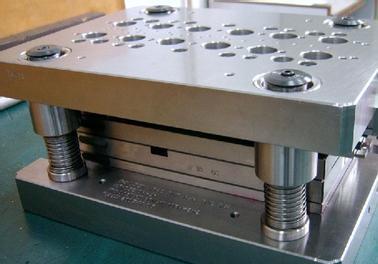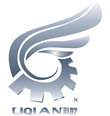How to Evaluate the Life Cycle Cost of a Stamping Die
3/2/2025


Introduction to Life Cycle Costing
Life cycle costing (LCC) is an analytical approach used to determine the total cost of ownership of an asset over its entire life span. This method encompasses not only the initial acquisition costs but also the operational, maintenance, and disposal costs associated with the asset. In the context of manufacturing, specifically for stamping dies, understanding LCC is crucial. It provides a comprehensive view of the financial implications involved in the production process, ensuring that all cost factors are taken into account when making decisions.
The significance of life cycle costing lies in its ability to promote informed decision-making. Traditional costing methods often focus primarily on upfront costs, which can lead to an incomplete understanding of the true financial burden associated with a manufacturing component. By incorporating LCC, manufacturers can identify long-term cost-saving opportunities and improve budgeting and forecasting accuracy. This holistic perspective ensures that organizations are better equipped to evaluate the full economic impact of their production processes.
Moreover, LCC differs from conventional costing approaches in various ways. Traditional methods may overlook indirect costs and future expenses that arise during the lifespan of an asset. In contrast, life cycle costing aims to provide a clearer picture of how expenses accumulate over time, including factors such as energy consumption, wear and tear, and the costs of potential downtime or replacements. As a result, businesses that adopt LCC are more likely to achieve a cost-effective approach to manufacturing, as they can proactively manage resources and invest wisely in their production equipment.
In summary, understanding life cycle costing is pivotal for organizations engaged in manufacturing stamping dies. Recognizing the importance of LCC not only enhances financial insight but also aids in optimizing overall production efficiency.
Key Factors Influencing Life Cycle Costs of Stamping Dies
When evaluating the life cycle cost of a stamping die, several critical factors come into play. Understanding these elements is essential for manufacturers to manage expenses effectively and optimize performance throughout the die's lifespan.
Firstly, the initial design and material costs significantly impact the overall life cycle costs. The selection of materials for a stamping die not only governs its durability but also affects production expenses. Higher-quality materials may incur greater upfront costs; however, they often pay off in longevity and reduced replacement frequency. Consequently, a thoughtful evaluation during the design phase can lead to more cost-effective decisions in the long run.
Moreover, production efficiency is another crucial factor affecting life cycle costs. The design should aim for straightforward maintenance and ease of use to maximize productivity. A die that can be quickly set up and adjusted minimizes downtime, thereby enhancing overall production rates. For example, implementing modular designs can expedite repairs and improve the adaptability of a stamping die for various applications, translating to lower operational costs.
Maintenance requirements also play a pivotal role in determining life cycle costs. Regular maintenance schedules can help identify potential problems before they escalate, thereby prolonging the die's operational life. Companies that invest in training their staff for proper maintenance and handling of stamping dies often experience fewer incidents of wear and tear, ensuring sustained efficiency and lower costs over time.
Finally, the impact of wear and tear, accumulative over the die's life, should not be underestimated. Factors such as the frequency of use and the nature of the materials being stamped contribute to the degradation of the die. Manufacturers must account for these factors to create a comprehensive cost analysis, integrating real-world examples of well-maintained versus poorly maintained dies to highlight these differences in practical scenarios.
Methods for Calculating Life Cycle Costs
Calculating the life cycle costs (LCC) of stamping dies is essential for informed decision-making in manufacturing environments. Several methodologies exist to facilitate this process, with notable approaches including Net Present Value (NPV), Total Cost of Ownership (TCO), and Return on Investment (ROI). Each method presents a unique perspective on cost evaluation and serves specific purposes in assessing the economic viability of stamping dies.
The Net Present Value (NPV) method offers a comprehensive approach by considering the time value of money. Through NPV, future cash flows related to the die's usage, such as maintenance costs and operational expenses, are discounted back to their present value. This approach allows manufacturers to determine the anticipated net benefit or loss of an investment over its life span and supports the comparison of different financial scenarios.
Total Cost of Ownership (TCO) extends beyond initial purchase price to encapsulate all costs associated with the stamping die throughout its lifetime. This includes acquisition costs, maintenance, repair, operational expenses, and even potential disposal fees. By taking a holistic view of costs, TCO helps organizations recognize the true financial commitment involved in owning and operating stamping dies, enabling them to make well-rounded purchasing decisions.
Return on Investment (ROI) is another pivotal tool used to evaluate the profitability of the stamping die investment. By calculating ROI, businesses can assess the efficiency of their investment relative to the expected returns. The ROI formula generally involves measuring net profits against total costs and is instrumental for stakeholders seeking to justify expenditures based on quantifiable benefits.
To effectively utilize these methods, it is imperative to gather relevant data on all associated costs, including material, labor, and operational logistics. With thorough calculations and diligent analysis, companies can interpret the results to guide their decision-making processes regarding the procurement and maintenance of stamping dies.
Case Studies and Best Practices
The evaluation of life cycle costs (LCC) for stamping dies has been adopted by various companies seeking to optimize their manufacturing processes. One notable case study involves a firm in the automotive industry that faced rising costs associated with die maintenance and production downtime. By implementing a comprehensive LCC analysis, the company was able to identify specific maintenance intervals that disproportionately impacted overall expenditure. As a result, they instituted a preventive maintenance schedule based on usage data rather than arbitrary time frames, leading to a 20% reduction in maintenance-related costs within the first year.
Another example comes from an aerospace component manufacturer that prioritized total cost of ownership when assessing its stamping dies. They discovered that the initial purchase price was often misleading, as they overlooked the long-term costs associated with operational efficiency and potential failures. By adopting life cycle costing principles, the company could select dies that offered higher durability and operational reliability, ultimately decreasing operational risks and increasing productivity. This strategic approach not only resulted in substantial cost savings but also improved product quality and customer satisfaction.
However, these initiatives are not without challenges. One common difficulty faced by many organizations is the integration of LCC analysis into existing costing models. This typically requires intensive training and a shift in cultural mindset within teams. Best practices that emerged from these case studies emphasize the importance of collaboration across departments, particularly between engineering, finance, and production teams, to ensure a holistic approach is maintained throughout the life cycle cost assessment process. By fostering open channels of communication, companies can effectively address potential challenges, leading to more informed decision-making.
Overall, the application of life cycle costing in stamping die management presents valuable insights that organizations can leverage to enhance their cost-effectiveness and strategic planning. By learning from these case studies, companies can adopt a tailored approach that aligns with their specific operational needs and budgetary constraints.
